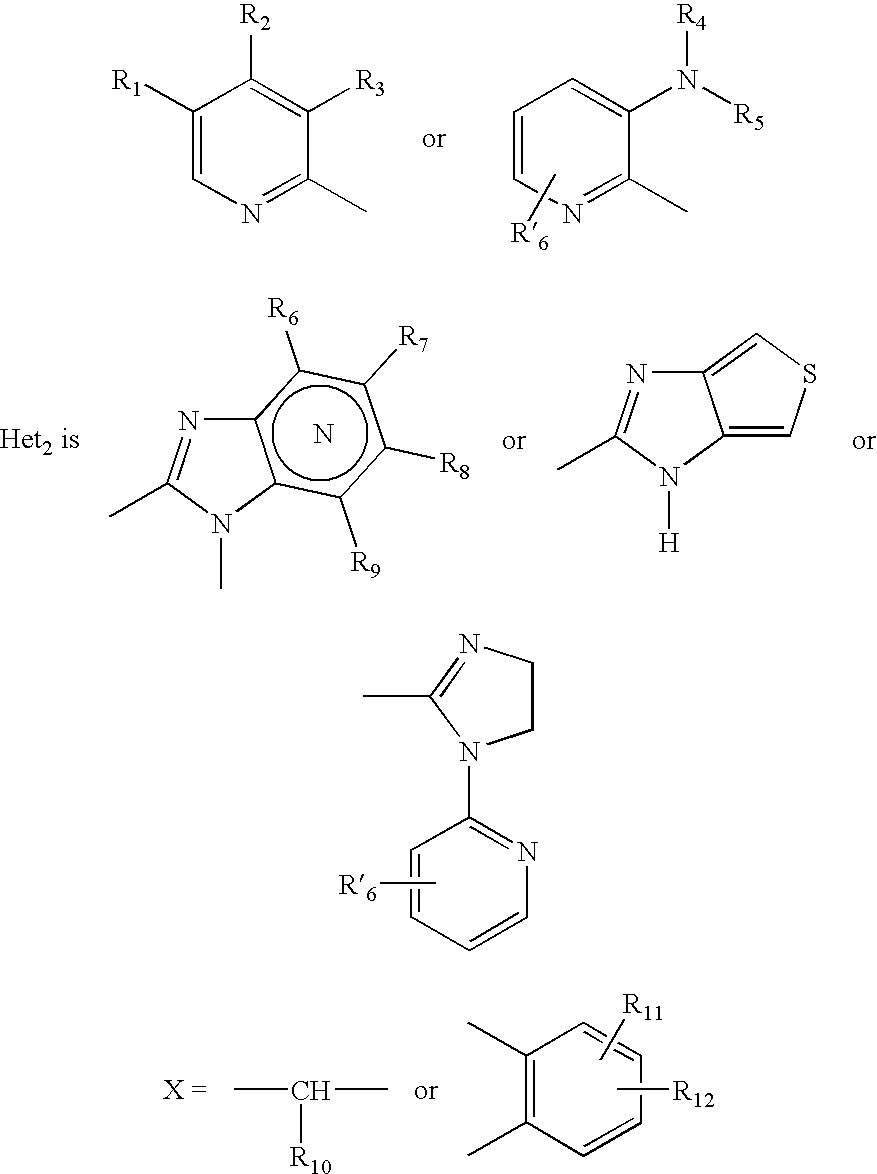Mehtod to obtain microparticles containing a h+ k+ atp-ase inhibitor
a technology of atp-ase inhibitor and microparticle, which is applied in the direction of microcapsules, capsule delivery, drug compositions, etc., can solve the problems of toxicity of the solvent used, difficulty in achieving acceptable microparticles, and difficulty in achieving microparticles, etc., to prevent gastric acid aspiration, prevent and treat stress ulceration, and inhibit gastric acid secretion
- Summary
- Abstract
- Description
- Claims
- Application Information
AI Technical Summary
Benefits of technology
Problems solved by technology
Method used
Image
Examples
example 2
Omeprazole Mg
[0094] Preparation of Particles
[0095] Microparticles were prepared in a continuous fluidized bed system (Glatt AGT 150, Weimar, Germany) from a suspension of omeprazole Mg (EP 97921045.7). The suspension was done by dissolving hydroxypropylmethylcellulose 6 cps (225 g) and polysorbate 80 (30 g) into water (4246 g) and by dispersing the omeprazole Mg (1500 g) in the mixture. Solid content of the suspension was 29% (in weight). The particle size of the suspended esomeprazole Mg was further reduced by wet milling.
[0096] The suspension was sprayed into a Glatt AGT 150 fluidized bed with a speed of 20-30 g / min. The nozzle had a opening of 0.8 mm. The inlet air flow was approximately 100-115 m.sup.3 / h, inlet air temperature varied 82-85.degree. C., atomizing air pressure 4.8 bar, sifter air pressure 45-62 mbar and sifter air flow 1.1-1.3 m.sup.3 / h. Median size of the uncoated particles was 164 .mu.m, 90% smaller than 206 .mu.m and 10% smaller than 126 .mu.m when determined by...
example 3
Esomeprazole Mg
[0105] Preparation of Particles
[0106] Microparticles were prepared in a continuous fluidized bed system (Glatt AGT 150, Weimar, Germany) from two suspensions of esomeprazole Mg trihydrate. The suspensions were done by dissolving hydroxypropylmethylcellulose 6 cps (223 g and 225 g) and polysorbate 80 (29.3 g and 29.6 g) into water (6955 g and 7020 g) and by dispersing the esomeprazole Mg trihydrate (1486 g and 1500 g) with a high-shear mixer (Silverson). Solid content of the suspensions were 20% w / w. The particle size of the suspended esomeprazole Mg was further reduced by wet milling.
[0107] The suspension was sprayed into a Glatt AGT 150 fluidized bed with a speed of 20-30 g / min. The nozzle had a opening of 0.8 mm: The inlet air flow was approximately 80-100 m.sup.3 / h, inlet air temperature varied 82-85.degree. C. and 86-87.degree. C., atomizing air pressure was 4.8 bar, sifter air pressure 43-46 mbar and sifter air flow was 1.1 m.sup.3 / h. Mean values of measured medi...
PUM
| Property | Measurement | Unit |
|---|---|---|
| size distribution | aaaaa | aaaaa |
| size distribution | aaaaa | aaaaa |
| size distribution | aaaaa | aaaaa |
Abstract
Description
Claims
Application Information
 Login to View More
Login to View More - R&D
- Intellectual Property
- Life Sciences
- Materials
- Tech Scout
- Unparalleled Data Quality
- Higher Quality Content
- 60% Fewer Hallucinations
Browse by: Latest US Patents, China's latest patents, Technical Efficacy Thesaurus, Application Domain, Technology Topic, Popular Technical Reports.
© 2025 PatSnap. All rights reserved.Legal|Privacy policy|Modern Slavery Act Transparency Statement|Sitemap|About US| Contact US: help@patsnap.com



